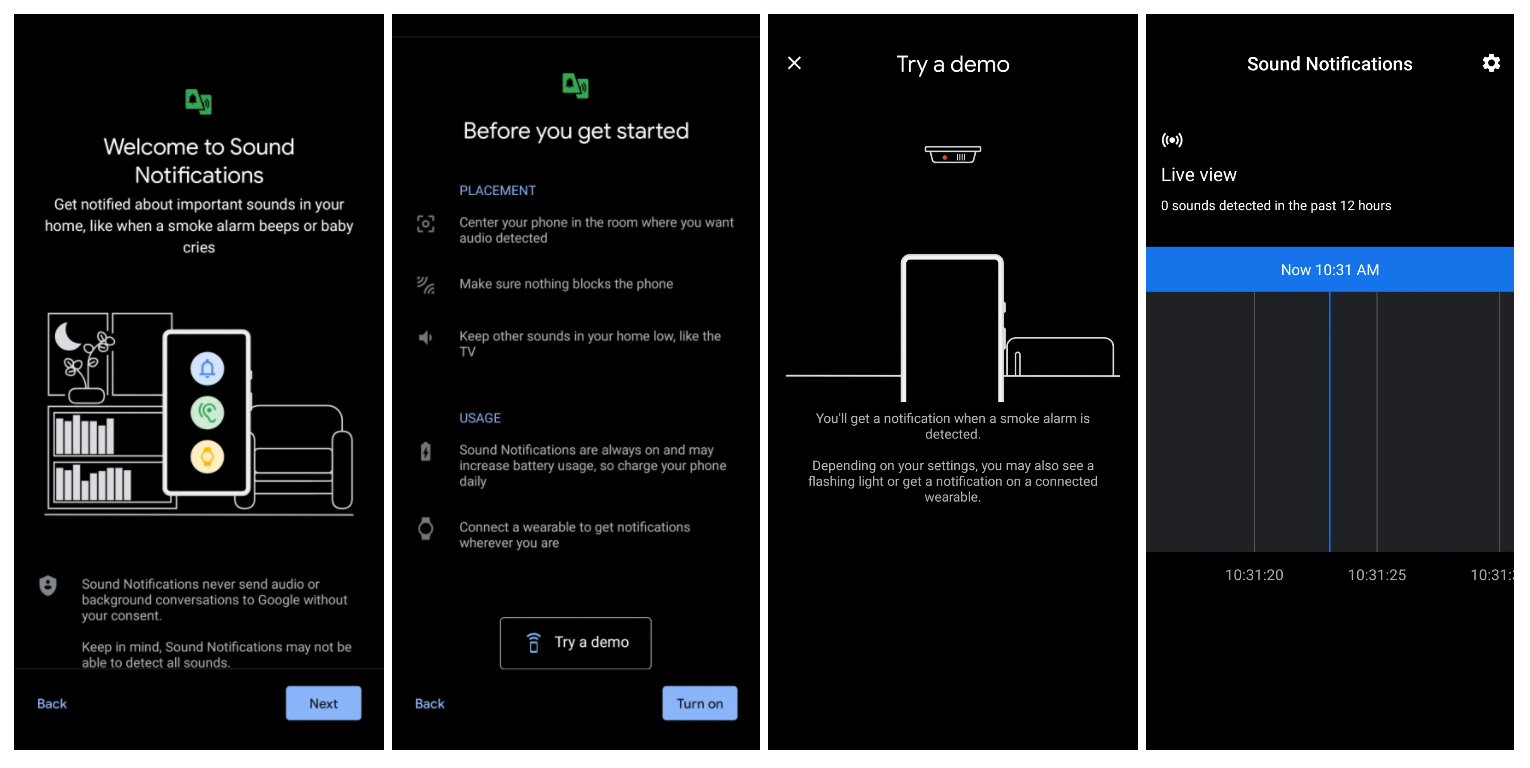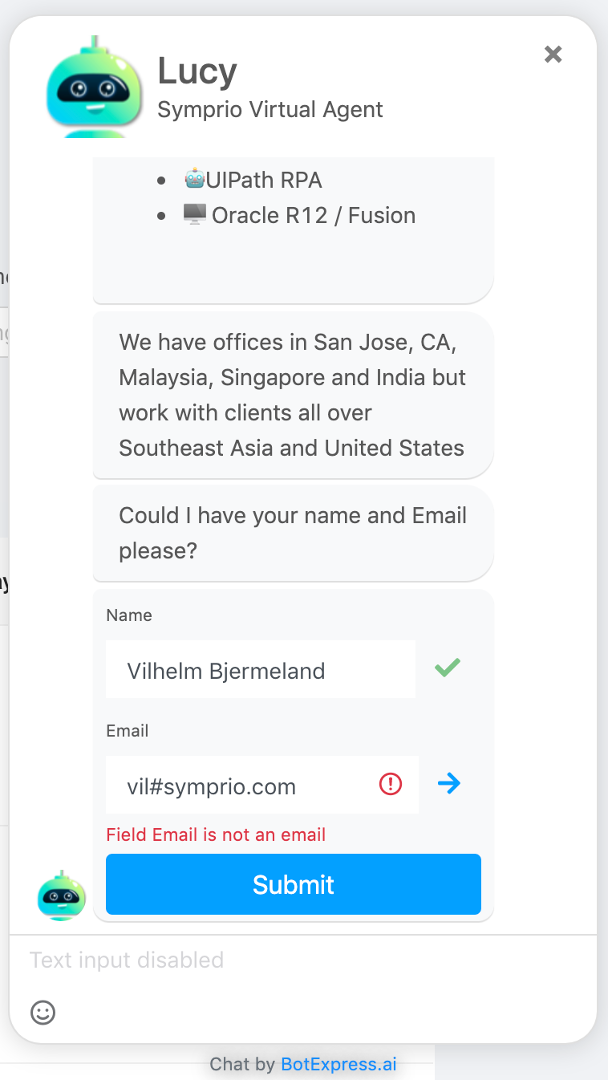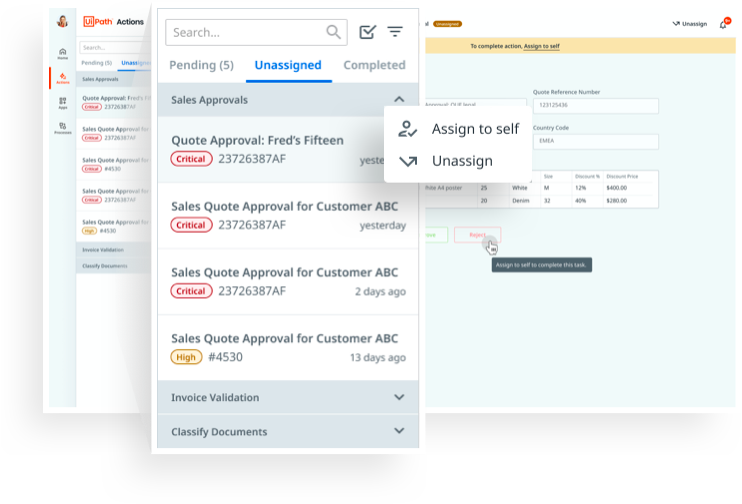Your cart is currently empty!
Month: January 2021
-
New Android Accessibility Feature Alerts You to the Sounds You Don’t Hear
Android gadgets will inform their owners whether its receivers get the sound of an infant crying, dog barking, or faucet running. The new…
-
Which chatbot do you use? And for what? does it satisfy your needs
General question.
submitted by /u/Botmywork
[link] [comments] -
A new conversational chatbot..

submitted by /u/srinivas15
[link] [comments] -
How to create a buttonless bot
Does your chatbot live in Facebook Messenger? If so, it might stop working properly because of Facebook’s most recent API updates. But don’t despair, in this article I’ll explain how to deal with the changes and create a buttonless bot that works, no matter what Facebook does!

To button, or not to button? That is the question.
But not when it comes to Facebook.
On November 30th, Facebook announced they are updating their Messenger API to comply with European privacy laws, which will impact many of the 300.000+ chatbots that currently live on this platform.
If your Facebook page and bot users fit the criteria listed here (such as being located in Europe), users will no longer be able to see bot messages that contain:
- Buttons
- Carousels (also called generic templates)
- Quick replies — update: these might actually stay
- Any media other than images — such as video, files, audio
So that’s the bad news. The good news is that you can easily avoid all of the messaging types above by cleverly using intents, context and other conversational design tricks. And if you think about it, we have all these new, smart devices that we can use in almost any way we choose. But out of laziness or lack of innovation, we continue to force users to click a tiny little area just a few pixels wide..
Let’s do something about it. Let’s go buttonless!

1. How to avoid buttons and carousels
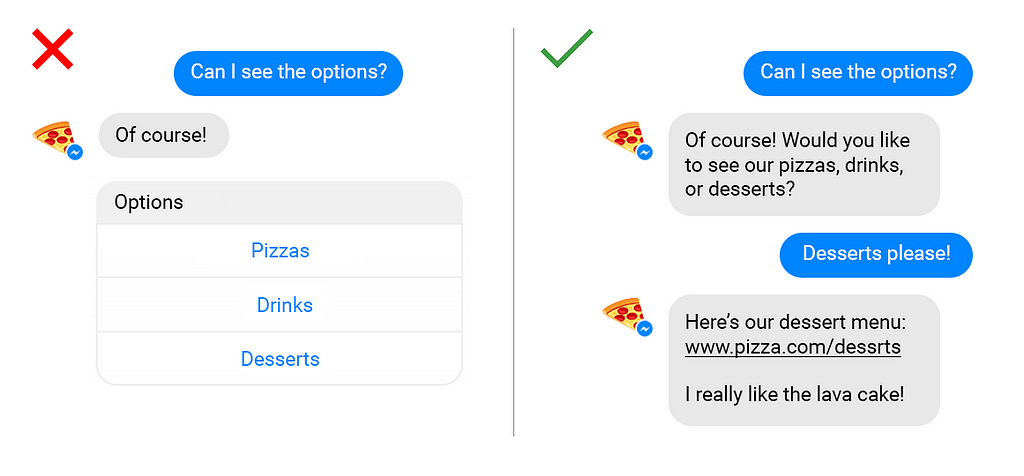
You can easily replace buttons by using a combination of match entities and input validation. For example, when the user places an order, the bot can check in a predefined list of available menu items if this order is indeed possible. Sure, you’ll need to create a few extra steps, but it almost makes it more conversational this way.
Using a button to show a URL? Simply turn it into a message containing that same URL. Sure, it’s a few extra steps and it doesn’t look as good, but it makes no difference in the end. In fact, it’s so much more conversational!
Carousels are a way to visualise options by using images and buttons. Each option can have up to three buttons, which are the same as any other buttons.
2. How to avoid quick replies
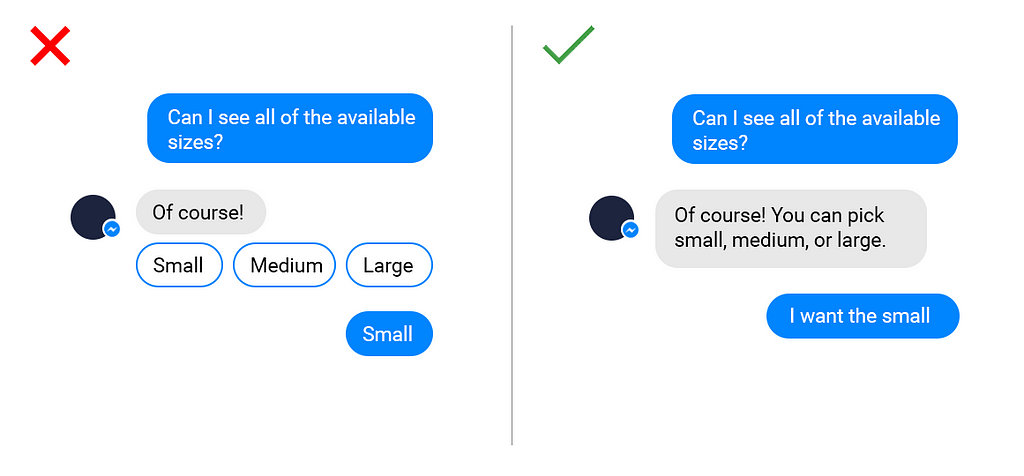
Instead of showing quick replies, you can add the options to your text message. Create an entity (for example, @shirt.size) and add all possible values (small, medium, large), so your bot is able to detect the correct value.
3. How to send files
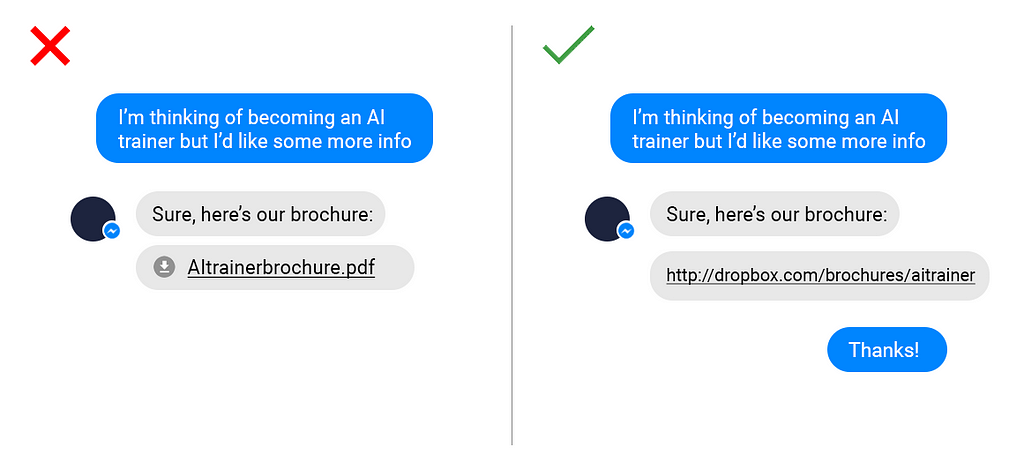
Instead of sending the PDF to the user for download, you can host it on any file hosting service like Dropbox, Google Drive, WeTransfer etc. This way, the user can view the PDF in their browser.
ps: Chatlayer.ai recommends a max. size of 5 MB for media files shared on Facebook Messenger, as Facebook seems to struggle with files larger than that.
5. How to use videos and audio
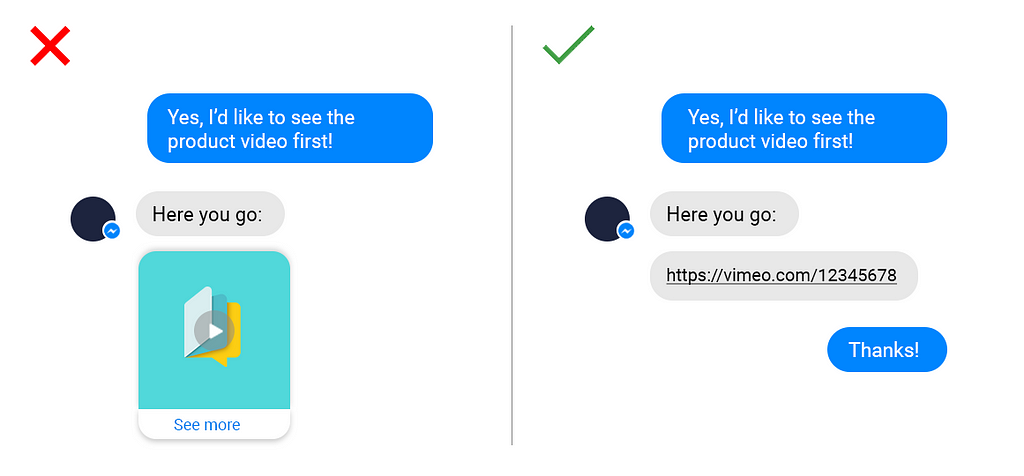
I know, the video thumbnail on the left looks better visually, but when it comes to the actual conversation, nothing really changes. The user still has to click on the bot’s message, it just looks a bit different. And instead of the video being played inside the conversations, users will be redirected to an external website.
Do make sure to create an intent for ‘see product video’ so the bot knows what to do when the user states this type of intent.
To wrap it up
Sure, buttons are handy and fun. I love a good button myself! But if your bot lives on Facebook Messenger, you should skip them all together. Having a buttonless bot protects it from breaking every time Facebook decides to update their API.
Besides, a chatbot’s main purpose is and always will be to imitate a real-life conversation with people. And there’s no buttons in real life anyways. 😉

Hi, I’m Tess, language enthusiast and taco lover. I work as a Conversation Designer at Chatlayer.ai — an intuitive platform where you can build clever AI bots in any language, no coding skills required.
Interested in knowing more about chatbots? Want to share stories or talk conversation design? Let’s chat on Twitter or send me an email.
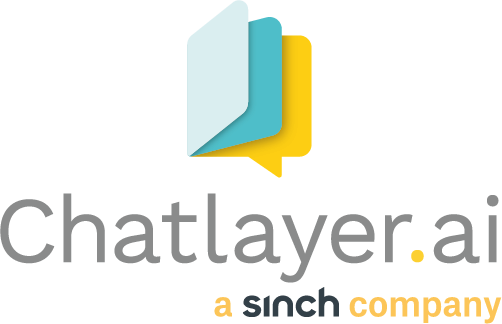
Try it yourself!
Sign up for our 30-day free trial on chatlayer.ai and follow the easy step-by-step tutorial to build your own chatbot from scratch — no coding skills required.
Don’t forget to give us your 👏 !



How to create a buttonless bot was originally published in Chatbots Life on Medium, where people are continuing the conversation by highlighting and responding to this story.
-
Why RPA Bots & Chatbots/Live Chat are natural partners in automation
While RPA robots automates a series of steps which are somewhat predictable in terms of application and data, chatbots automates communication with live chat acting as human-takeover when the chatbot gets questions not trained for.
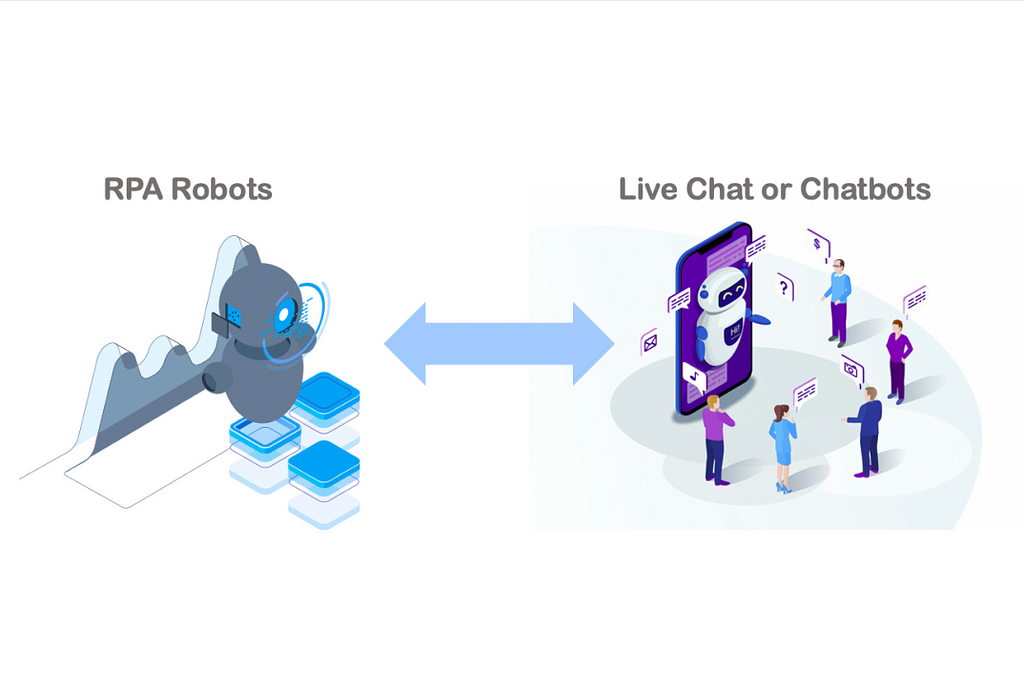
RPA & Chatbots are natural partners Symprio is a UiPath Gold partner and delivers automation solutions for customers and also provide chatbot solutions leveraging both our own (BotExpress.ai) as well as other platforms. We see more and more where automation flows are being combined where RPA robots executes processes on top of legacy applications and chatbots and live are being used to automate or simplify communication.
Modern chatbot platforms like our own (BotExpress.ai) detects intents (essence of what you want) as well as entities (data variables) which provide the specifics for a specific request.

More traditional live chat solutions only handle the chat process (and in essence fully unstructured data) but with Artificial Intelligence and richer features in live chat (or chatbot) applications we are able to extract the necessary entities (data variables) and turn this unstructured data in to structured information which are required as inputs RPA robots to executed a process.
Chat sessions can extract in basically two ways:
(1) By leveraging NLP entity extraction process chatbots can find and identify information from unstructured messages to convert for example the phrase “tomorrow” to a specific date.
(2) As part of chat sessions instead of just using text we use something we call SmartForms which increases the reliability of these inputs.
This includes text fields, date selectors, dropdown lists etc. to be able to capture and validate input fields within a chat sessions.
By being able to either select or validate input fields in the chat sessions the entities (or data variables) are more reliable parameters which can be used to trigger RPA automation flows.
Reliability of these data inputs is key for reliable automation flows.
Scenario 1: Triggering RPA Robots to retrieve information or perform transactions from chat
A chat session captures the necessary information (either through live chat or a chatbot) and triggers and an RPA robot to either go to web applications or legacy applications to retrieve information or execute transactions.
A key advantage of RPA robots such as UiPath is that they are not dependent (though also possible) on integrating using API’s and can work on both older type applications (even AS/400 green screens) to modern web applications and even visual changes in the screen. With UiPath’s powerful image recognition engine even Citrix-based environments, which are purely image-based, processes can be executed.
This can be used both with internal and external customers. Internal chatbots can offer employees information or requests (i.e. leave request) about HR, IT, Finance, Supply Chain or Sales & Marketing team which in turn can launch UiPath robots via Orchestrator and once complete return with results/information back to the chat sessions.
Another example are Level 1 Helpdesk chatbot which can capture the necessary information, guide users through troubleshooting for common issues which also can be supported by robots to perform troubleshooting and resolution (below is a scenario on robots doing the IT support)
External bots provide support for customers or suppliers in sales, support, procurement
Scenario 2: For Live Chat agents
The typical Live Agent uses pure chat for the purposes of communication but based on the information captured and (copied/pasted) in to other applications to check on status, retrieve information or to make changes. When you look at the time an agent spends to deal with a customer upwards of 45% of the time is spent on transferring information from chat sessions and in to other applications (this is the time when you sit and wait for a response from the agent) and back.
Leveraging more intelligent data capture mechanisms such as AI entity extraction or embedded forms in the chat sessions which is stored as variables in the session which in turn can be sent to the UiPath Orchestrator to execute processes via robots, saving time from the agent having to transfer data (copy/paste) as well as actually executing the process or retrieval from third-party systems.
Once the information is retrieved this in turn is sent back to the chat sessions and automatically be embedded in response messages from the agent. This effectively lets the agent have robots at their finger tips to execute processes at will.
Even in cases where you are using a simpler live chat platform unable to extract and orchestrate robots, the data can still be captured in to a spreadsheet and agent can launch the robot manually to execute transactions or retrieve information much faster than manually logging in to the applications.
This significantly increases the capacity as well as speed of resolution for agents, while at the same time ready the process for complete automation where a chatbot executes the same process an agent does.
Scenario 3: Leverage chatbots (primarily internally) as a Human-in-loop process
When a robot executes a process it may reach a point where either additional information, a decision or evaluation is necessary. Similar to how UiPath Action Center (as part of Orchestrator) can be used to create tasks which are assigned to people within the organization to act on.
Once the assignee makes a decision or provides the missing information to Action Center the robot takes over and continues the process to the next step.
Similar to Action Center, internal chatbots can also be the medium to engage internal business users for quick decisions/approvals or missing information for bots set up on internal messaging platforms such as Slack, Workplace by Facebook or Microsoft Teams.
Given that all these platforms are mobile enabled the speed of decisions and resolution can often be faster than when relying on emails.
Originally published on LinkedIn
Symprio is a UiPath Gold partner with a strong delivery team located in USA, Singapore, Malaysia & India. Symprio, leveraging our own platform called BotExpress.ai, provide internal and external facing chatbots integrated with UiPath robots to automate end-to-end processes.
Don’t forget to give us your 👏 !



Why RPA Bots & Chatbots/Live Chat are natural partners in automation was originally published in Chatbots Life on Medium, where people are continuing the conversation by highlighting and responding to this story.
-
New Google Assistant Developer Tools Promise Better Discovery and Smart Display Visuals
Google shared a cornucopia of new devices at Google Assistant Developer Day in a quickfire arrangement of demos. While the new App Actions…
-
The social machine: How to make your customers engage with your Rasa chatbot
How to make RASA chatbot a real human-like machine:
https://medium.com/russmediaequitypartners/when-faqs-become-exciting-6f8d9c1fa949
submitted by /u/russmedia-devops
[link] [comments] -
Solving the agency problem… My take on a self service expert network that requires no installation
Hey guys this concept shows a chatbot based expert network that I made for fun:
The goal is to show how you can solve the agency problem in a self service more accessible way.
Curious if you’d use something like this for market research and product validation?
Other feedback is welcome!
submitted by /u/nchafni20
[link] [comments]
